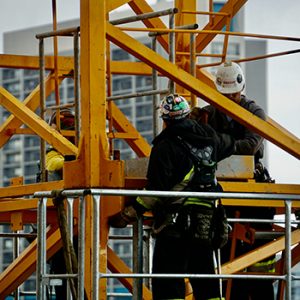Why One-Time Construction Safety Training Is Not Enough
Safety training is critical in preventing injuries. It also helps save companies money and increase productivity on work sites. There is no question that safety training is a win for both construction businesses and their workers, but how can professionals make lessons learned ongoing rather than one-off requirements?
While one-time training is a great first step, employees need multiple sessions and a general culture of safety to truly embrace requirements and safe practices. Here are a few reasons why this matters.
1. It Can Create a Culture of Safety
Safety should be discussed on an ongoing basis – not just when an employee first starts working. Managers need to address standard procedures regularly to normalize these lines of communication and build a true culture of safety.
It’s easier to disregard safety practices when they’re treated as one-and-done sessions. So, make time to talk about accident prevention, safety equipment inspections, rescue plans and job-specific hazards. Schedule ongoing training and encourage workers who invest time in safety-related certifications.
While talking about safety isn’t always the most exciting, it lets the team know that workplace conditions are taken seriously by management. This importance will waterfall down the organizational structure and help even newer hires feel comfortable applying their training and raising important issues to their managers when needed.
2. It increases Employee Loyalty
Ongoing training is a win-win for both construction employers and their teams. Employees who know managers value their well-being are more likely to be invested and productive. This productivity is key to ensuring daily operations run smoothly.
Then, there is less turnover which further saves money and enhances efficiency. Many construction organizations are thinking through ways to retain valued workers in a competitive industry. Putting safety first is an excellent way to both protect and encourage existing employees.
When having these discussions, get everyone involved and be open to workers’ feedback. This shows companies value their team members’ opinions and want to cultivate a comfortable environment. Plus, encouraging some hands-on involvement helps the training itself feel more engaging and memorable.
3. It Saves Businesses Money
There’s no question that safety is a financial concern for construction businesses. Safety training is essential to prevent fines, attorney fees and increased operating costs. In 2002, construction injuries cost a total of $11.5 billion with a large driver of these costs being the time workers need to recover before they can safely work post-injury.
Investing in workplace safety and health not only manages these risks but can improve a construction organization’s overall productivity and financial performance. The business case for safety is there — and ongoing training is worth the initial investment.
4. Some Employees Change Roles
When employees change jobs, they need new training in safety procedures. While basic information is the same, there may be unique challenges within their role. For example, they could be working with unfamiliar equipment or on a team with different safety procedures.
To prevent injuries, they need an additional training session. Ensuring employees are adequately informed in their new roles helps operations run smoothly, even as career paths shift and employees move between teams and responsibilities.

5. It Is Helpful When New Products Come Out
As technology advances, new personal protective equipment may come into play. Employees need to be trained to use these devices properly. For example, some companies test wearable technology, such as smart boots or helmets, that offer new features employees may be unfamiliar with.
There’s less value in state-of-the-art technology if a team doesn’t know how to apply it. Management should take time to regularly review and update training programs and flag any opportunities to provide updated information to existing employees so everyone stays on the same page.
6. It Helps Companies Keep Up With Federal Changes
The government continuously makes updates about safety standards based on current trends. The Occupational Safety and Health Administration (OSHA) is responsible for setting construction guidelines all companies must follow. These requirements include things like fall- and weather-related protection.
When creating safety programs, research these regulations first. Then regularly check the OSHA website for the most up-to-date information. They also provide resources and checklists. Take this information to company meetings and perform regular safety checks. These checks are essential for catching any problems early, preventing more severe injuries.
7. It Teaches Employees How To React To Certain Situations
When riskier work conditions do pop up, how workers react can have a significant impact on the outcome. Employees must be trained in a way that helps them feel calm and prepared.
Having multiple training sessions can cement what needs to be done in a worker’s head. Then, when a situation happens, the safe response will be more ingrained and there is a higher likelihood they can process and react calmly.
Under stress, a person can make rash decisions that lead to injury. So, knowing the proper steps to take can ensure they handle the situation decisively. For example, suppose an object suddenly comes rolling into their pathway when clearing land. It’s important the individual knows where the emergency brakes of the machinery are located.
Ongoing Safety Training Is a Boon in Construction
Setting up an initial safety training to meet workplace safety standards is an excellent step for construction businesses. From there, though, how do leaders ensure safety is ingrained in company culture? Running continuous training programs can help establish safety norms, stay up-to-date with industry standards and let employees know you’re there for their needs.
Interested in receiving more great construction news, research and content from NCCER? Click here to join our mailing list!

